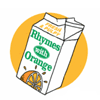Nutrition News: Migraines and Your Diet
It seems diet has an effect on most of our ailments. The latest study confirms that what you eat can affect the intensity and duration of a migraine headache. The study, published in the British Journal of Nutrition, looked at dietary patterns in women with migraines.
It's true that heredity plays a big role in migraines; however, certain foods, alcohol, hormonal fluctuations, stress and lifestyle may also affect the intensity and duration of migraines.
This particular study, conducted by researchers at the Department of Nutrition of the Islamic Azad University in Tehran, Iran, focused on the impact of dietary patterns on migraines rather than the impact of individual foods. The study looked at 266 women in Iran, ages 18 to 50, with body mass indexes between 18.5 and 30 (normal to overweight). The International Physical Activity Questionnaire was used to assess physical activity and dietary intake was assessed via the food frequency questionnaire. In addition, Nutritionist-IV software was used to analyze data for protein, fat, carbohydrates, vitamins and minerals. To assess migraine intensity, researchers used the Migraine Disability Assessment (MIDAS) questionnaire and Visual Analog Scale (VAS).
Participants were classified into three categories based on dietary patterns. The first pattern included foods with calcium, vitamin A, vitamin K, vitamin C, vitamin B6, vitamin B2 and magnesium. The second pattern included foods with vitamin B1, carbohydrate, vitamin B3, vitamin B9, protein and total fiber. The third only included vitamin D and vitamin B12.
Researchers found that the second dietary pattern resulted in the lowest migraine intensity on the VAS and shortest pain duration. The first dietary pattern also resulted in lower migraine intensity.
Researchers also found that migraines were shorter in duration with both the second and third patterns.
The bottom line is what you eat and the nutrients provided by your food matter, even for migraine headaches. If you suffer from migraines, be sure to get plenty of protein, fiber, carbohydrates and foods high in B vitamins such as whole grains to lessen the length of a migraine. To lessen severity, add foods high in vitamins C, K and A, calcium and magnesium.
Q and A
Q: Are there some simple things I can do to help control diabetes?
A: The American Diabetes Association recommends choosing foods high in fiber, which can help you feel more satiated for a longer period with fewer calories and without increasing your blood sugar. And think small. Choosing smaller, more reasonable portions on a smaller plate can make a big difference. Ask yourself if you're really hungry or simply thirsty. Try a glass of water before you reach for that cookie. You want to choose foods that are lower in both fat and sugar. Another important habit is to add more activity. The more you move, the better you will feel and the lower your blood sugar readings will be.
RECIPE
Even if you don't have diabetes, a diabetic diet is a healthy way to eat. Here's a recipe from "Everyday Diabetic: Simple Recipes for Daily Living" that fits into the popular Mediterranean diet plan. The Mediterranean diet plan was named the top diet plan by U.S. News and World Report. Try this lemon-garlic salmon for a healthy weeknight dinner served with fresh vegetables or a salad.
LEMON-GARLIC SALMON WITH TZATZIKI SAUCE
Servings: 4
1/2 cup diced cucumber
1/4 teaspoon salt, divided
1 cup plain, nonfat Greek yogurt
2 tablespoons fresh lemon juice, divided
1 teaspoon grated lemon peel, divided
1 teaspoon minced garlic, divided
1/4 teaspoon black pepper
4 (4-ounce) skinless salmon fillets
Place cucumber in small colander set over small bowl; sprinkle with 1/4 teaspoon salt. Drain 1 hour. For tzatziki sauce, stir yogurt, cucumber, 1 tablespoon lemon juice, 1/2 teaspoon lemon peel, 1/2 teaspoon garlic and 1/4 teaspoon salt in small bowl until combined. Cover and refrigerate until ready to use. Combine remaining 1 tablespoon lemon juice, 1/2 teaspoon lemon peel, 1/2 teaspoon garlic, 1/4 teaspoon salt and pepper in small bowl; mix well. Rub evenly onto salmon. Heat nonstick grill pan over medium-high heat. Cook salmon 5 minutes per side or until fish begins to flake when tested with fork. Serve with tzatziki sauce. Serves 4.
Per serving: 243 calories; 29 grams protein; 3 grams carbohydrates; 12 grams fat (2 grams saturated); 60 milligrams cholesterol; 508 milligrams sodium.
========
Charlyn Fargo is a registered dietitian with SIU School of Medicine in Springfield, Illinois, and the current president of the Illinois Academy of Nutrition and Dietetics. For comments or questions, contact her at charfarg@aol.com or follow her on Twitter @NutritionRD. To find out more about Charlyn Fargo and read features by other Creators Syndicate writers and cartoonists, visit the Creators Syndicate website at www.creators.com.










Comments